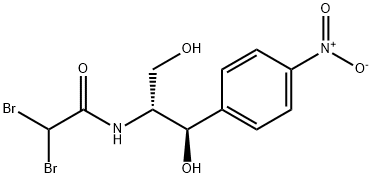Description
Bromamphenicol is a dibrominated derivative of the antibiotic chloramphenicol.
1 It inhibits rat liver mitochondrial and
E. coli protein synthesis by 90.6 and 98.8%, respectively, when used at a concentration of 93 μM, and inhibits DNA synthesis in human lymphoblastoid cells by 83% at 1 mM. Bromamphenicol can also bind to the major adhesin subunit DraE from
E. coli.
2
References
1. Manyan, D.R., Arimura, G.K., and Yunis, A.A.
Comparative metabolic effects of chloramphenicol analogues Mol. Pharmacol. 11(5),520-527(1975).
2. Pettigrew, D.M., Roversi, P., Davies, S.G., et al.
A structural study of the interaction between the Dr haemagglutinin DraE and derivatives of chloramphenicol Acta Crystallogr. D Biol. Crystallogr. 65(Pt 6),513-522(2009).
